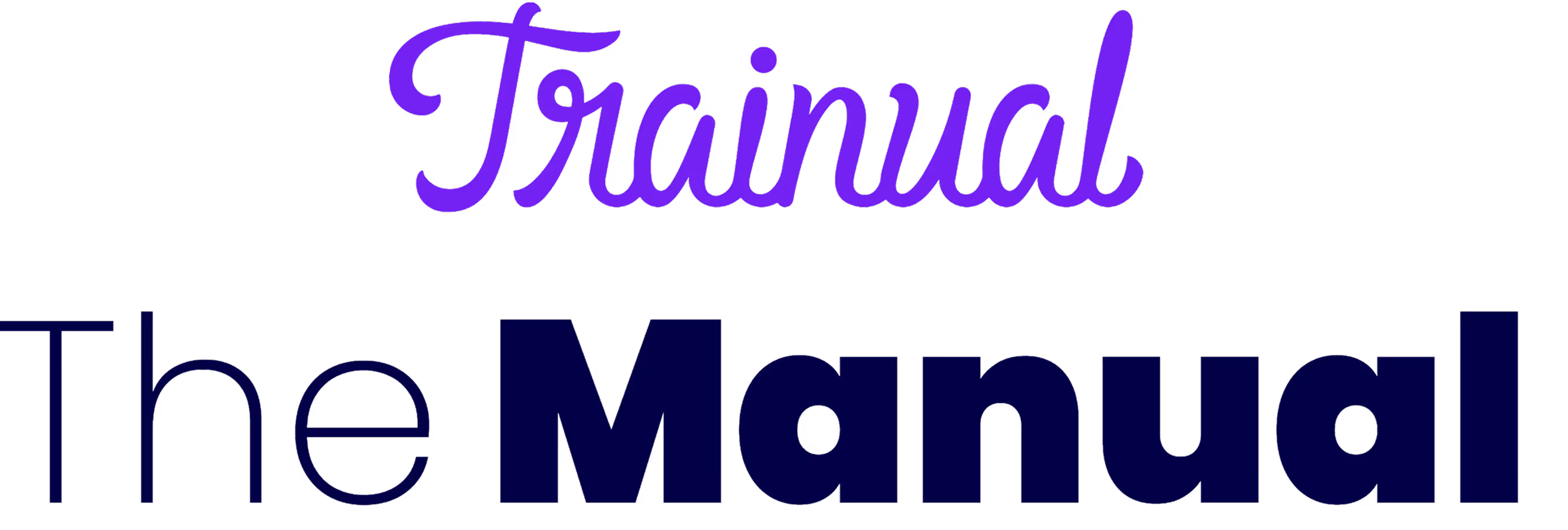Annual Planning Strategy Process Template
Use this proven 5-step framework to bring clarity to strategic planning, boost alignment, and drive powerful business growth.
Jump to a section
This template was created in partnership with Hayfa Aboukier, Principal at Range Ventures.
Introduction
The Problem
Are you drowning in a sea of to-dos, struggling to make a dent in your ambitious goals? At Trainual, we were there. We had five objectives, five key results… and a theme song for each. The energy was high, but the results? Not so much. This is the story of how we went from chaotic multi-tasking to laser-focused execution, and how you can do the same using a simple, effective strategic planning framework.
Core Principles
This framework hinges on three pillars:
- Radical Focus: Prioritize ruthlessly. Instead of spreading yourself thin across numerous objectives, concentrate on one or two key areas for maximum impact. Remember: One objective, three to five key results, maximum.
- Iterative Improvement: Strategic planning isn't a one-time event—it's a continuous process. Embrace regular retrospectives (quarterly or bi-monthly) to review progress, adjust strategies, and learn from mistakes. This ensures you're constantly adapting to market changes and improving results.
- Collaborative Alignment: Successful strategic planning demands a top-down and bottom-up approach. Leadership provides the overall vision while individual teams contribute their expertise and feedback. This ensures alignment across the organization and fosters a sense of ownership.
Steps to Design an Effective Alignment Strategy
Step 1: Assess The Current State
Before setting goals, honestly evaluate your current performance. Identify strengths, weaknesses, opportunities, and threats. Gather input from all levels of your organization. This might involve surveys, one-on-ones or dedicated workshops to get the pulse of the entire team.
Step 2: Define Your Key Objective and Key Results (OKRs)
Translate your vision into specific, measurable, achievable, relevant, and time-bound (SMART) objectives. Focus on high-impact goals and use clear, quantifiable key results to track progress. For each objective, determine the 3-5 key results that will indicate success.
Step 3: Align Roles and Responsibilities
Clearly define roles and responsibilities, ensuring each person understands how their contributions directly support the overall strategic goals. The podcast references that the team had a ‘listening tour’ before setting their new strategy. Communicate why this is important to increase team engagement.
Step 4: Develop Actionable Plans
Break down each key result into specific, actionable tasks. Assign ownership, deadlines, and resources. Use project management tools and systems to stay organized and track progress.
Step 5: Implement Regular Retrospectives
Establish a regular process for reflection and feedback (bi-monthly or quarterly). Use frameworks like "Start, Stop, Continue" to identify what's working, what's not, and what needs to change. This continuous improvement cycle is critical for long-term success.
Addressing Potential Obstacles
Change can be challenging. Anticipate resistance and prepare strategies to address potential concerns. This might include:
- Leadership buy-in: Ensure executive-level support for the new strategic planning process.
- Team training: Provide training and support to ensure everyone understands and can effectively use the new framework.
- Open communication: Create a culture of open communication where team members feel comfortable sharing concerns and providing feedback.
Conclusion
Implementing this framework takes time and consistent effort, but the payoff is enormous. By embracing radical focus, iterative improvement, and collaborative alignment, you'll transform your strategic planning process from a source of stress and frustration into a powerful engine for growth and team engagement. Remember, as the podcast emphasized, it's about having faith in the process, iterating along the way, and celebrating your team's accomplishments.
Similar Templates






